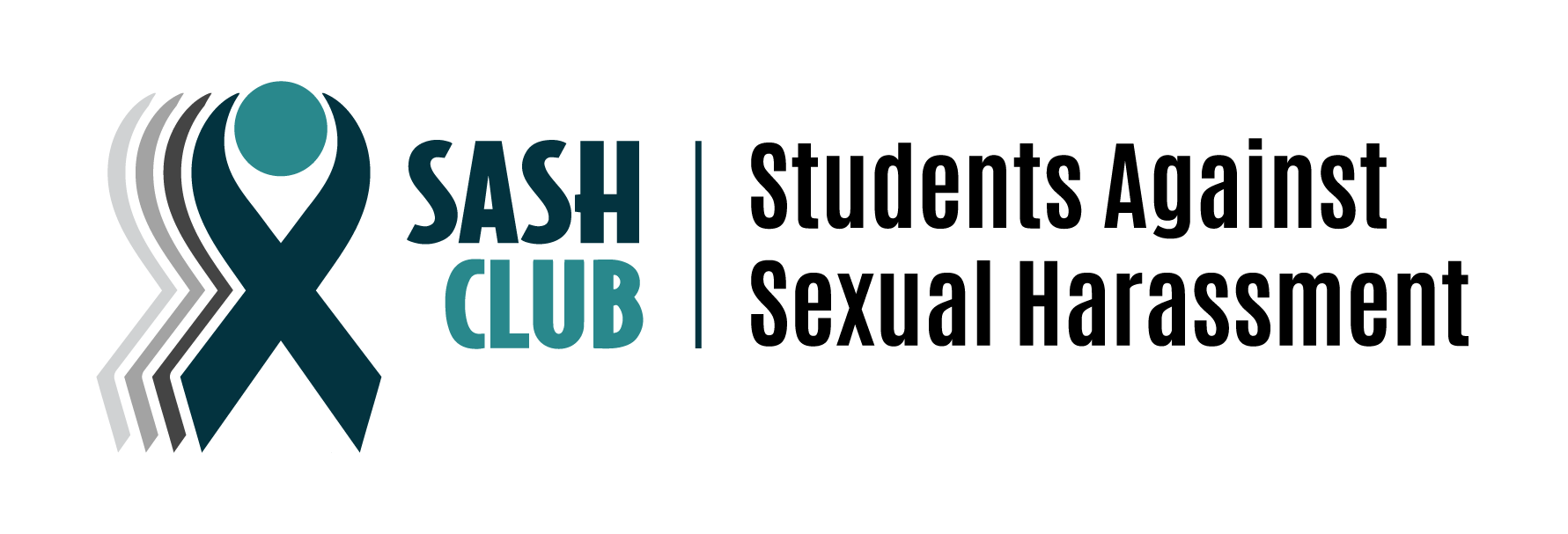Blog
Jordan High School’s SASH Club Awarded DPS WHOLE Schools Fund Grant
We are thrilled to announce that Jordan High School’s Students Against Sexual Harassment (SASH) Club has been awarded a Durham Public Schools WHOLE Schools Fund grant to expand its student-led work promoting safety, inclusion, and mental wellness on campus.
Read more...
Each year, the Durham Public Schools Foundation WHOLE Schools Fund supports mental health and wellness initiatives that bring the Foundation’s core values – Wellness, Healing, Opportunity, Learning, and Equity (WHOLE) – to life. The 2025 funding cycle focuses on creating safe and brave spaces for students, improving mental health awareness, and strengthening peer and family-centered support systems.
SASH equips students to create safer, more supportive school environments through peer leadership and evidence-based prevention. Support from the WHOLE Schools Fund will help Jordan’s SASH Club launch a new SASH Ambassador Program, training student leaders to collaborate with athletic teams, identity-based clubs, and community partners to promote respectful peer culture and mental health awareness across the school.
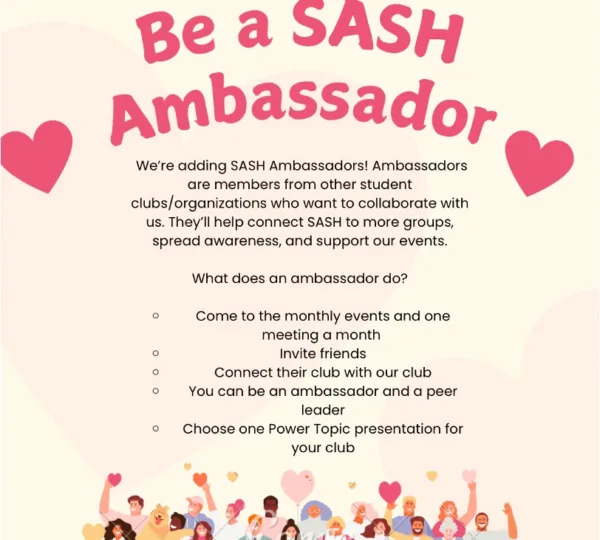
This project directly addresses both of the WHOLE Schools Fund’s focus areas (student well-being and equitable access) while aligning with four of the CDC’s recommended strategies for improving student wellness.
Safe spaces that empower students:
SASH creates brave, inclusive environments where students feel supported and connected. Through activities and collaborative events with identity-based clubs, students gain accessible and stigma-free spaces to process experiences and build community. The new SASH Ambassador program embeds trained student leaders within athletics, affinity groups, and student organizations, ensuring that every corner of school life has a voice for inclusion and respect. These efforts align with CDC strategies by promoting social, emotional, and behavioral learning and providing training in psychosocial skills through trauma-informed leadership development.
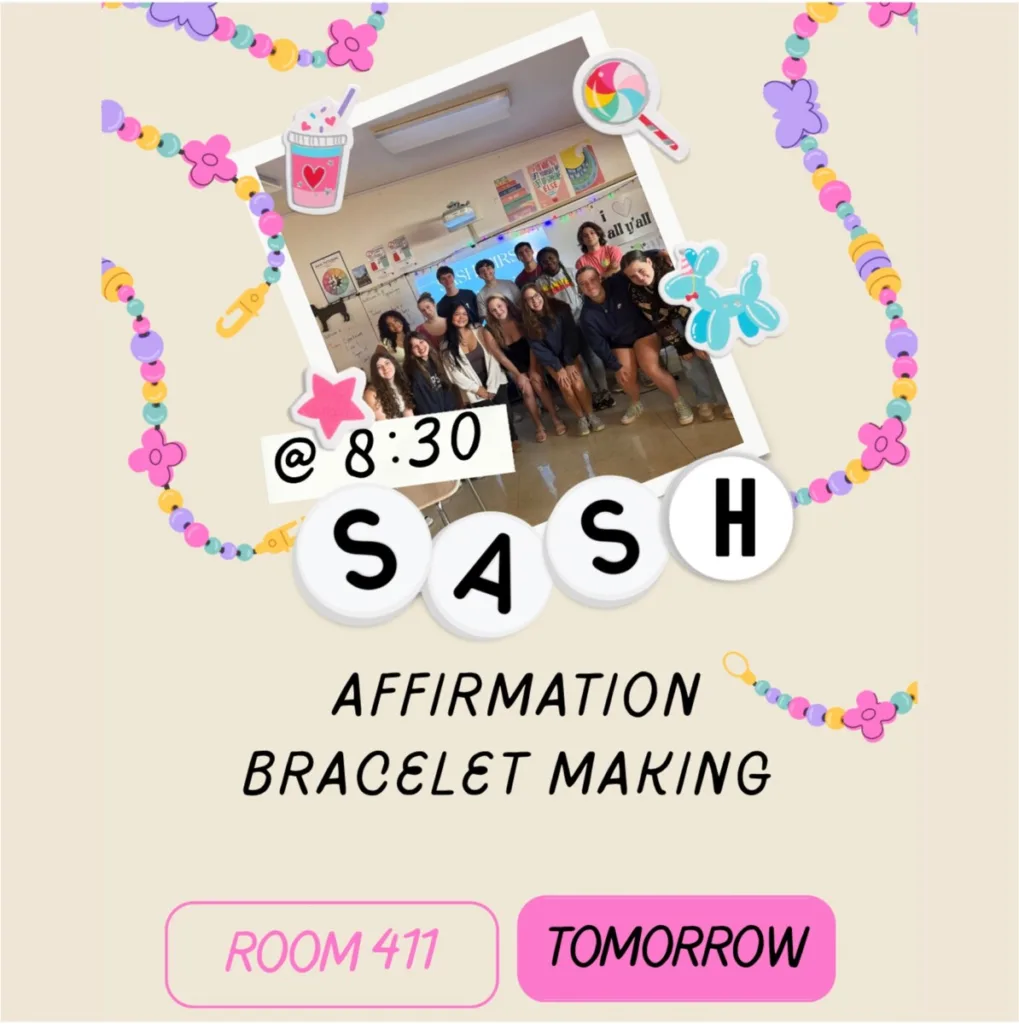
Mental health awareness:
SASH also strengthens schoolwide mental health awareness through campaigns such as Teen Dating Violence Awareness Month, Misogyny-Free Schools Campaign, Consent Week, and Sexual Assault Awareness Month. Documentary screenings, book discussions, and DPS-approved workshops and collaborations with Durham Crisis Response Center and Duke’s SHAPE program expand students’ mental health literacy and reduce stigma around seeking help.
Up until now, SASH members and advisors have personally covered the costs of supplies, outreach materials, and event resources. While this grassroots effort has made a meaningful impact, dedicated funding from the WHOLE Schools Fund will allow the club to expand its reach, build sustainable infrastructure, and create opportunities for more students to get involved.
“Our goal has always been to make Jordan a place where every student feels safe and respected,” said SASH Club President Jane Golonka. “This grant gives us the ability to reach more people and create lasting change for the whole school and community.”
“It feels empowering to know that students can lead this kind of work,” added SASH Club Secretary Rose Golonka. “We’re showing that caring for mental health and standing up against harassment go hand in hand, and that our generation can make school a safer place for everyone.”
Through this project, SASH Club seeks to model what it means for a school community to be safe, equitable, and empowering for all.
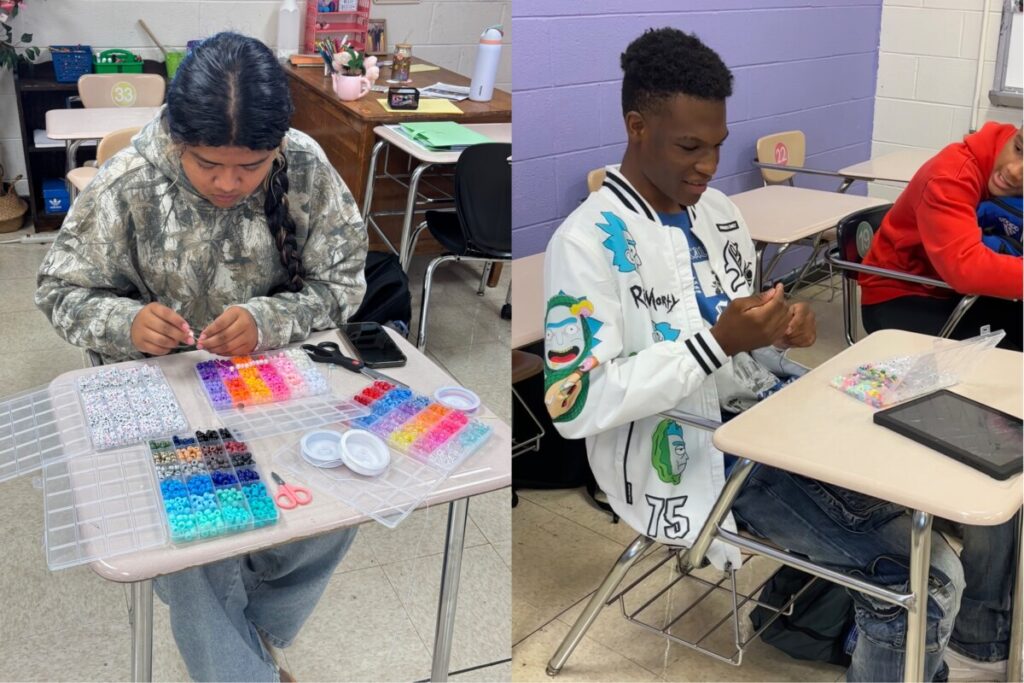
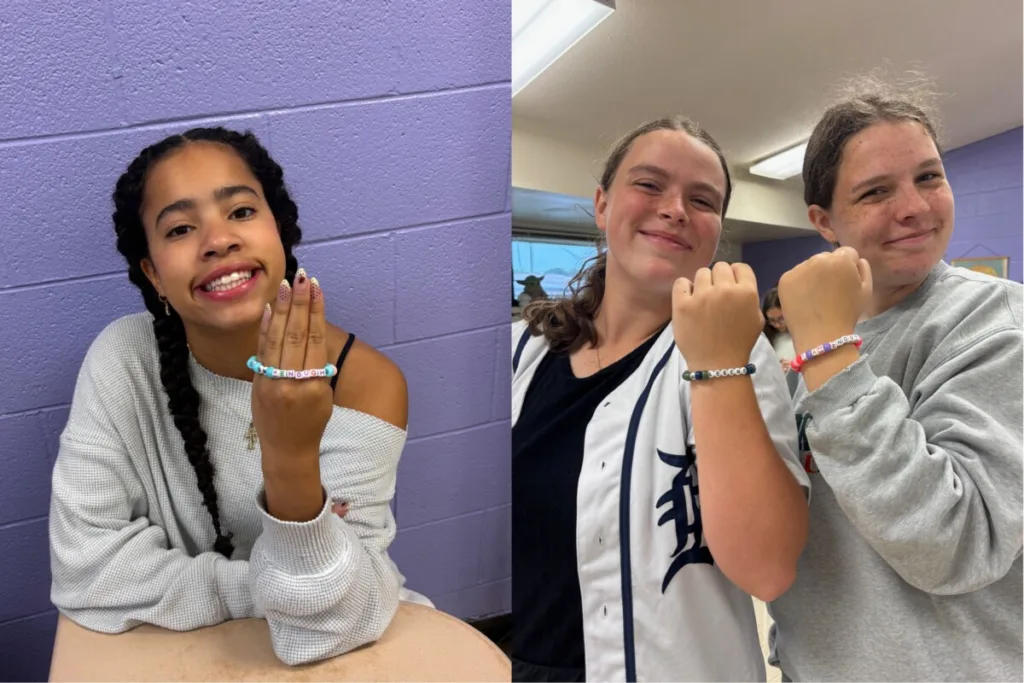
Jordan High School SASH Club is now in its fourth year.
SASH Club Online and Why You Should Join!
 by Rose Golonka
by Rose Golonka
I’m 15 years old, and I’ve considered myself an activist for as long as I can remember. When I was six, I attended my first protest —the Women’s March in Raleigh. At that age I also had a bookshelf full of stories about strong women, a letter from Senator Elizabeth Warren pinned to my bulletin board, and a wardrobe overflowing with “girl power” T-shirts. For my 10th birthday, I even had a Girl Power theme party, complete with a “Smash the Patriarchy” piñata.
Read more...
My views on gender and racial equality were shaped by my community. I grew up in Durham, North Carolina, a diverse, mid-sized southeastern city with a long history of activism and civic engagement. In my family, social justice wasn’t a side conversation; it was part of daily life. My parents have been advocates for sexual assault and dating violence prevention since college. My siblings started a Students Against Sexual Harassment (SASH) Club at their high school in 2022. So it wasn’t a big leap for me to join SASH Club too.
SASH Club offers students access to nationally vetted, evidence-based resources that make activism doable instead of overwhelming. But I know not everyone grows up in a community that supports speaking out. Sometimes it feels risky to stand up. That’s why SASH Club Online, a project of Stop Sexual Assault in Schools, matters so much. It provides a safe space to learn, share, and act, even if your immediate community doesn’t.
What is Activism?
A lot of people think activism means marching in the streets with signs. And sometimes it does. But really, activism is action plus voice. It’s noticing something unfair and deciding you’re not okay with silence.
To me, activism isn’t about being fearless, it’s about being persistent.
Sometimes activism is big, like organizing a walkout. But sometimes it’s small, like checking in on a friend who’s been harassed, calling out a sexist joke, or posting information online that helps someone feel less alone. Every act matters, because together they add up to cultural change.
To me, activism isn’t about being fearless, it’s about being persistent. Even if change feels slow, even if it’s uncomfortable, we keep going.
Why Focus on Sexual Harassment?
Because it happens a lot, and it’s too often ignored. Four out of five students experience sexual harassment in middle or high school. Sometimes it’s peer-to-peer harassment like unwanted comments, gestures, sounds, rumors, online harassment, or inappropriate touch. Or it’s misconduct by school employees. Research shows that between 12 and 17% of students will experience some form of sexual misconduct by school staff before graduating high school. Harassment that occurs off campus or online often impacts a student’s ability to learn at school. Sexual harassment and assault can compromise a student’s education and cause long-term trauma.
Why Should I Get Involved in Activism?
Activism teaches leadership, empathy, and resilience. And while it also looks great on college applications and resumes, more importantly it helps us learn to stand up for ourselves and others. Whether we’re organizing an event, creating art, or simply showing up to listen, we’re building skills that last a lifetime.
Why an Online Club?
Not every school has a safe space for students to talk about sexual harassment. That’s why I’m involved with the launch of SASH Club Online. We can connect across schools, states, even countries, learn from each other, and build community. We’re not alone!
What We’ll Do Together
This isn’t just another club where we log into Zoom and sit quietly. We’ll:
- Learn and talk about topics that matter to us
- Dive into conversations with invited guests
- Share real stories (because stories stick more than statistics)
- Create through projects like reels, zines, blogs, campaigns, and art that engages others
- Build a community where it’s okay to be honest, vulnerable, and strong at the same time
Why Join?
Maybe you haven’t experienced harassment yourself. Maybe you have. Either way, this is about all of us because the harassment directly or indirectly affects us. We’ll learn how to build our own safety on and off campus, and how to create respectful learning, work, and social environments.
Think about it: If your friend is hurting, do you want to be the person who says nothing or the one who helps them feel less alone? Joining SASH Club is a way to show that you care, that you believe people deserve to feel safe. You may even want to start a club at your own school.
My Ask of You
I’m only 15. I don’t have all the answers. But I know that when young people come together, people listen. I saw this in my own school SASH Club. Change becomes possible.
So here’s my ask: join us. Even if you’re nervous. Even if you’re busy. Even if you’re not sure you belong (spoiler: you do). Everyone age 12+, including adult allies, is welcome.
This club isn’t about being perfect. It’s about being present. Because when one voice speaks up, it can be ignored. But when a chorus of voices speaks up together, it’s heard.
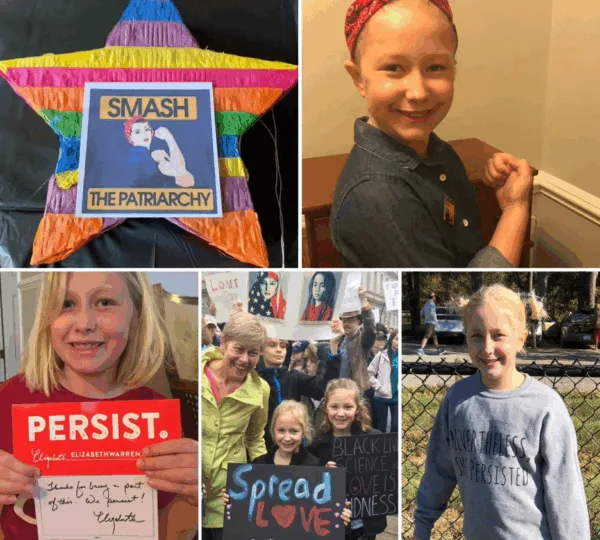
Author’s photos clockwise from top left: Smash the Patriarchy piñata, the author as Rosie the Riveter, wearing “Nevertheless, She Persisted,” author attending Women’s March in Raleigh, NC, “We Persist” note from Senator Elizabeth Warren
Real Change Starts With Us
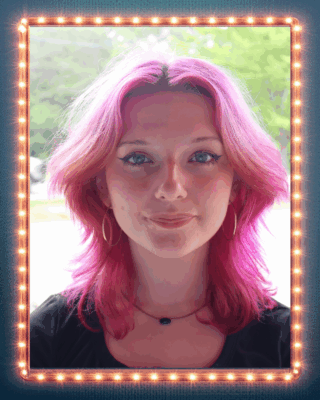 by Nora Hughes
by Nora Hughes
When I founded the SASH Club at Lincoln Charter School, North Carolina, I had absolutely no idea what would come of it—but silence was out of the question.
Read more...
Too often, youth are expected to ignore or minimize issues such as sexual violence. We’re told that it’s too serious, too controversial, or too uncomfortable to address in a school setting. But these issues are common in our communities, whether we see them or not. Pretending they don’t exist doesn’t make us safer. It just leaves us unprepared, unsupported, and unheard.
This is exactly why I started a SASH Club. I wanted to create a space where students could learn, speak up, and take action. Even before requesting approval for the club, I spoke with enthusiastic school staff and students who were ready to join me. We were so, so small at first, but now, our twenty-plus official members have been united by the shared belief that change starts with conversation.
Since then, SASH Club has become something bigger than I could have imagined. We are leading our school and community to be more inclusive, open-minded, and aware of survivors’ experiences. One of the first steps we took was to hold an informational and celebratory table for Transgender Day of Visibility. We believe that SASH Club should support and uplift marginalized groups, such as the transgender community, which experience more sexual harassment and violence than others. So, we set up a table with a trifold displaying gender non-conforming individuals who have made an impact on their communities and uplifted the transgender identity. We handed out Peep marshmallows, saying “Support your peeps!” to whomever we could.
But handing out marshmallows and uplifting transgender people in the South is no piece of cake! We faced significant pushback, with people making unkind and hurtful remarks. After helping lead our table that day, one of our club members, a transgender male, faced bullying on and off campus for taking a stand against transgender oppression. It was incredibly difficult for all of us, but positive change came from our event.
During Sexual Assault Awareness Month, we brought Denim Day to our school. For weeks prior to Denim Day, we encouraged students to wear denim, and we explained why it was so important. Of course, we received criticism of every kind from every possible direction, from both students and staff. Some familiar faces even decided to organize a counter-protest, saying they would wear leggings and other fabrics in contrast to denim. I was stunned to see that many of these protesters were women!
But I never could’ve been prepared for what I saw on Denim Day! I walked into school wearing a full denim bodysuit. My classmates were decked out in denim jackets, jeans painted with statistics and statements against sexual violence, some carrying denim purses, and much more, worn by the very people who had said such terrible things to and about us! The same faces that had made unkind remarks about our club, saying we were “asking to get bullied,” were intentionally wearing denim and standing in solidarity. I had never felt so empowered in my life!
Since then, we’ve held countless discussions on boundaries, consent, and how to support survivors. We’ve educated our peers with more materials and displays, including a global board illustrating how sexual harassment has been handled around the world. We have worked so hard to make people think—and have succeeded! We’ve sparked meaningful conversations and pushed our community to have a better understanding that sexual violence is not just something that happens to “other people.” The victim could be your mother, brother, teacher, your co-worker. No one is immune, and that’s why it’s so important that we become informed to both prevent incidents of sexual harassment and assault and support survivors.
Through this work I’ve grown as a person and as a leader. I’ve learned how to speak up in rooms where people don’t always want to listen. I’ve faced resistance, but I’ve kept going. I’ve seen firsthand what can happen when students refuse to stay quiet. Being a SASH Club leader has led me to blossom as an individual and has served as an outlet for a drive that is as fast and powerful as a moving train.
This experience, along with unflinching support from my peers and mentors, has inspired me to pursue a future in journalism and human rights. I want to continue writing, organizing, and working with others to build a world where safety, dignity, and justice are guaranteed for everyone.
So, to any student I say: “You don’t have to wait until you’re older to make a difference. You can start something right now, right where you are. You have a voice. Use it. Your story matters, and so does your courage.
Real change doesn’t come from waiting. It comes from doing. That starts with us.
Nora Hughes is a student at Lincoln Charter School in North Carolina.
SASH Club: Shifting School Culture to Combat Sexual Harassment
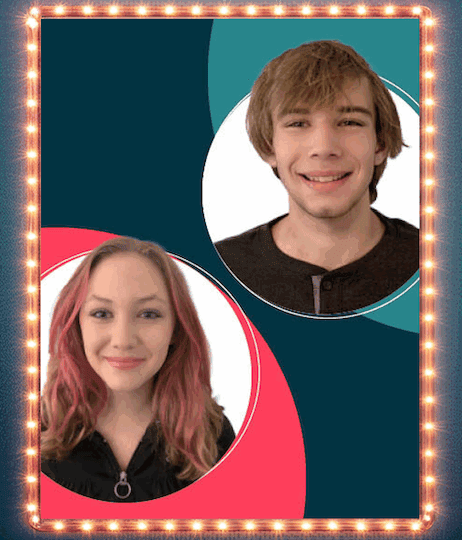 Jane and Daniel Golonka started a SASH Club (Students Against Sexual Harassment) at Charles E. Jordan High School, a large, diverse school in Durham, NC with over 1,900 students in grades 9-12. Jane and Daniel believe that “the diversity of our school, the nearby universities, and the popularity of civic engagement in our area contribute to the success of our club.”
Jane and Daniel Golonka started a SASH Club (Students Against Sexual Harassment) at Charles E. Jordan High School, a large, diverse school in Durham, NC with over 1,900 students in grades 9-12. Jane and Daniel believe that “the diversity of our school, the nearby universities, and the popularity of civic engagement in our area contribute to the success of our club.”
Why we started a SASH Club
Read more...
Jane: Last year in 8th grade I was sexually assaulted in the classroom by a peer at my middle school. After I reported it, the blowback I received from peers and adults made me realize how important it is to educate people about these issues. If my peers had understood the definition of sexual assault, the “freeze” response, and how to respond to survivors, this would have buffered the trauma. Instead, my trauma was both invalidated and exacerbated.
Daniel: These issues were important to our family even before this happened to Jane. We want to give all students and adults this knowledge so that together we can shift the culture in our community and hopefully in society. Luckily, at our public high school we are able to work towards these goals with strong support so far.
How we started a SASH Club
Jane: Last year, my parents and I used the Stop Sexual Assault in Schools website as a resource. When we saw the national SASH club on the SSAIS website, we knew we wanted to start one at Jordan High School. I am a freshman this year and was a little nervous about starting a club, so it was great that my brother, a senior, offered to help.
Daniel: It was easy because the SASH Club website provided everything we needed to get started. We downloaded the How to Start a SASH Club Guide and used the template for writing an email to the principal in early August. Principal Taylor wrote back to confirm her support for the club and directed us to find an advisor and register the club with our assistant principal.
Jane: Our counselor suggested that we ask Ms. Beaudry to advise the club. Ms. Beaudry teaches social studies, including Women + Gender Studies. She is involved in school equity teamwork and co-leads the Spectrum GSA club. It seemed she’d be a great fit. We emailed her and received an enthusiastic response within minutes of pressing send. We met with her the week before school started. This is when I started to get really excited about the possibilities because our faculty advisor is knowledgeable and supportive–and already working in this space.
Daniel: Our faculty advisor helped us reserve a table at the activities fair and complete the forms we needed to register the club.
How we recruit members
Jane: We set up a table at the activity fair at our school’s open house in August. We told our friends, posted on our personal social media, and created an Instagram page. We followed all the clubs and sports organizations at our school on Instagram and they followed us back. Follow us @jhs_sashclub!
Daniel: Our parents shared with other parents on social media. At our first meeting we had about ten people show up. We walked around with fliers and donuts to tell people about our club. We also put catchy ads in the school announcements and talked to a writer from our student newspaper about the club. We posted flyers at school and reminders on social media. Within a few weeks we already had 20 attendees!
Our accomplishments in the early weeks of Jordan High School SASH Club
Daniel: We have recruited about two dozen members and raised awareness about the club. We have officers, a social media team, and a recruiting committee. I’m especially excited about the research and evaluation committee which will identify issues that Jordan students are most concerned about. It will work to evaluate the impact the club may have on the school climate. And Jane has done a great job establishing connections and partnerships.
Jane: I am really proud of the connections we have already made within the school, in the larger Durham community, and with the national SASH Club creator, Stop Sexual Assault in Schools. It is heartening to see so many people willing to support our efforts.
Logistical issues we faced starting a new club
Jane: We wondered how to reach students. Our school uses Instagram as an important way of communicating events and happenings around campus. We also use our club’s Instagram to recruit members, remind students of meeting times/locations, and post graphics to spread awareness and educate.
Daniel: The meeting time was an issue. Before school is a great time except that students who ride buses can’t get there in time. After school students also need transportation and athletes have practices or games. We chose to meet weekly before school. We created a Canvas page through the school to post announcements, notes from meetings, updates, sign-ups, and resources that any student can ask to access. We can also make school-wide announcements via this page.
Jane: Another challenge is creating school-wide educational programming for almost 2000 students. We are strategizing with Durham Crisis Response Center, our principal, and counselors to deliver presentations designed for smaller groups.
Other challenges we faced
Daniel: Initially we didn’t have many guys involved in the club, but after targeted recruiting efforts, males already make up about 20% of our members. We are trying to engage more young men through word of mouth and connecting with our athletic teams. We also hosted a booth with a tug-of-war game at our school’s homecoming festival, which attracted students of all genders to our booth, and some of the guys signed up for the club.
Jane: To be honest, there have been some negative responses to the club, including comments ranging from inappropriate to offensive to downright dangerous. This underscores the need for the club and the importance of educating students about language and behaviors which constitute sexual harassment or assault. Although these behaviors occur in the hallways and classrooms each day, they are largely ignored despite the harm they inflict. Overall, though, the response to our club has been overwhelmingly positive, which is very exciting for us. I am grateful to attend a school that supports the club’s efforts from administration to most of the students.
What is in store for the club this year
Daniel: Club members have offered several ideas. The SASH Club website and the SASH Club Power Topics are have also helped generate ideas.
Jane: Some of our upcoming events and future plans include:
- A booth at our school’s homecoming festival
- Guest speaker on intersectionality and sexual harassment, co-sponsored by other student clubs (Black Student Union, Asian Alliance, Spectrum Gay Straight Alliance)
- Sexual harassment educational/prevention programming with a local crisis response center
- Movie nights with other clubs
- Club field trip to the courthouse to visit the Special Victims Unit
- Supply drive for Durham Crisis Response Centers
- Educational programming geared towards athletes
- Consent Awareness Week
- Teen Dating Violence Prevention Month activities – February
- Sexual Assault Awareness Month activities – April
- Child Abuse Prevention Month activities – April
We encourage others to start their own SASH Club!
Jane: Start your own SASH Club to create a space to make friends while working together to end sexual assault and harassment. You can start a club at school, in your community, or virtually. Anyone can download materials about how to start a SASH Club, and there are resources on sashclub.org to help your club learn about important topics. Check out the Power Topics to educate yourself and others!
If you want to contact our club for information or support, please email or DM us on Instagram at @jhs_sashclub
Volunteering to Gain Insights and Educate Others
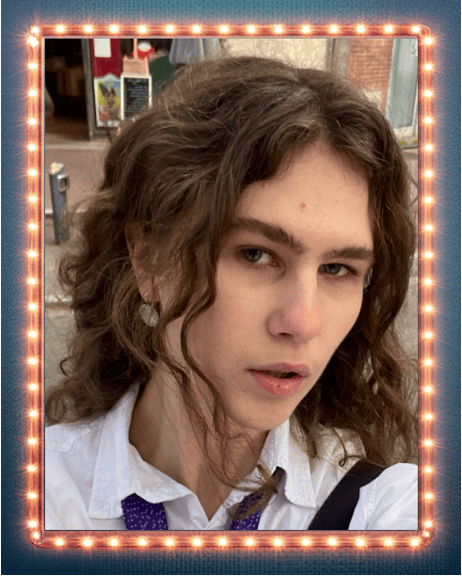 by Tanya
by Tanya
Last summer, I was looking for volunteer opportunities and wanted to find an issue that was relevant to my life. My goal was to gain new insights and help educate others. Eventually, the topic of sexual harassment clicked and I applied to volunteer with SASH Club, Students Against Sexual Harassment. But my story doesn’t start with France, where I study, or SASH Club. It begins with my country of origin.
Read more...
Up until grade 8 I didn’t even know about catcalling. I remember the first time I saw a video of a woman barking at a harasser. She struck me as so powerful and brave! Thanks to social media, I began learning about sexual harassment and setting boundaries.
Russian culture has always been more patriarchal when compared with those of Europe and America. As a teenager I noticed how women were often treated differently, whether at work or at school, for their clothes or “loud” personality. Some of my teachers objectified female students. We got better grades when dressing more “femininely” for classes taught by male teachers. We were scolded by administrators if our blouse was slightly see-through or makeup was bright. I was always encouraged to fit someone else’s standards. At school I realized how deeply gender bias and sexual harassment are rooted in education systems and our lives generally. I tried to educate people I talked with, so we all could help stop the unfair treatment.
There were many volunteer opportunities, but since I’m good at video editing and wanted to spread awareness online, I decided that creating videos would be ideal. Although it can be hard for me to speak up in public—becoming comfortable with other people’s opinions is a long, challenging journey—spreading awareness through a phone screen put me at ease. With every video I made for SASH Club, I gained practical insights that have helped me navigate life.
Most of my content comes from the SASH Club Power Topics and toolkits from Stop Sexual Assault in Schools (SSAIS). They contain key subject matter and include scenarios, discussion questions, helplines, and resources. I loved learning something new every day. Thanks to the Power Topics, I learned about hazing, date rape drugs, and how to get confidential help. I especially loved that the Power Topic presentations described the subjects in a simple, understandable way without omitting important terminology.
It was important to understand my target audience. Most people’s attention spans have narrowed so much that a 60-second video seems like a “long watch.” That’s why I used stickers, pictures, text, and transition effects to engage the viewer. Each video begins with a “hook,” such as an intriguing question, a controversial statement, or a scenario.
Not only did this project provide me with crucial knowledge, but it has also made me more resilient and organized. With the nine-hour time difference between France and my volunteer advisor, I had to plan my time wisely to meet deadlines. Perseverance was needed to overcome some editing challenges! I also learned to see creativity everywhere. When given a script, my job was to present it the best way, even if it meant searching for completely new formats.
Through volunteering, I gained new insights about my own experiences. For instance, I saw how Russia’s culture surrounding sexual harassment and assault is very different from American culture. In Russia, sexual harassment and assault are more normalized. If, say, a girl reported to the principal that she was harassed, she would be told, “It’s not serious.” While I won’t deny that this happens in America too, I believe the reporting system is better in the U.S. There also appears to be more support for victims, including students of color and LGBTQ+ students. It was astonishing to find so many ways American students can seek help or get educated about sexual harassment and assault.
After volunteering for forty hours, I obtained a lot of practical knowledge and new skills. Each of my 39 videos is unique and educational. Because the problem of sexual harassment very much resonates with me as a woman, volunteering has been especially meaningful. I am grateful for the opportunity to speak up about this global problem. I also fulfilled my goal to broaden my own knowledge about sexual harassment and assault. For example, when I made a “confidential help” video, I learned that victims of assault have the option of telling the story hypothetically (“if this were to happen”) without revealing their own experience.
The most important message I took away from volunteering—one I shared in every video—is that you’re never alone. There is always someone to help you, whether a trusted adult or local helpline staff. And there is always a community you can turn to, including the one created by SSAIS, the organization that created SASH Club. The SSAIS and SASH Club community is a welcoming group of advocates, academics, students, and parents where everyone can find their place, even if you come from Europe or Asia! Together people can do anything. This reminds me of the undeniable value of human connection: a warm shoulder when needed or an offer of support.
If you think every young person deserves a life free from sexual harassment, you can volunteer too. Choose your own way of making change. Whether you want to write, create videos, start a SASH Club, connect with youth—you can bring your creative ideas to SSAIS and SASH Club. It is certain: You will gain many insights while educating yourself and others. You will find a community of like-minded people and learn valuable life lessons.
——Tanya’s videos have appeared in American Federation of Teachers virtual conferences (SASH Club: A Peer-Education Approach to Addressing Sexual Harassment and Assault in Schools and Addressing the Rise and Impact of Misogyny Among Students in Grades 6-12), where they were seen by hundreds of registrants from around the world, and referenced in several online articles.
Watch Tanya’s reels on SASH Club’s YouTube channel.
Contact SASH Club to volunteer.
Jordan High School SASH Club Update
 by Rose Golonka
by Rose Golonka
My name is Rose Golonka and I’m the secretary of the Charles E. Jordan High School SASH Club, which was founded by my older brother and sister in 2022. Our club would like to share some of the accomplishments and events we have had this year, as well as ones we plan to have in the future!
Read more...
Power Topics
We have used the National SASH Club Power Topics as resources to empower our members with information on how they can enforce their boundaries, help survivors, and shift the culture in our school. During our weekly meetings, we review Power Topics such as boundaries and consent and Title IX. Hopefully we’ll be able to branch outside of the club and educate even more students later in the year!
Title IX
This past summer, our founder and co-president Jane Golonka attended Girls Learn International Summer Activist Training Camp, and she selected Title IX awareness as her focus. Title IX is a civil rights law that prohibits sex-based discrimination in any school or education program that receives funding from the federal government. It’s incredibly important to SASH Club that students remain informed about their rights and aware of changes to Title IX that may affect them and others, specifically girls and other gender minority students.
Raising money for community crisis center
Our SASH Club hosted a booth at our school’s fall market. We had a pop-up thrift store, which was possible thanks to those who donated clothes. It was a hit and we raised over $300 dollars! All of the money we raised was donated to Durham Crisis Response Center (DCRC), which provides free and confidential services to survivors including emergency shelter, crisis interventions, legal advocacy, counseling referrals, and support groups to community members in need. The organization’s Rape Prevention Education Coordinator will be joining us at an upcoming meeting to discuss best practices for prevention and education efforts.
Valentine-making event for Teen Dating Violence Prevention Month
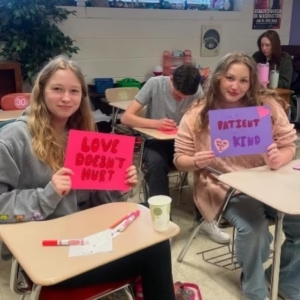 On Tuesday, February 11th, SASH Club hosted a Valentine’s Day event full of confections, crafts, and community! We had an amazing turnout and spent the whole morning making cards for loved ones, along with signs in relation to teen dating violence prevention month. It was a great time and an amazing way for our club to spread the message “Love Shouldn’t Hurt!”
On Tuesday, February 11th, SASH Club hosted a Valentine’s Day event full of confections, crafts, and community! We had an amazing turnout and spent the whole morning making cards for loved ones, along with signs in relation to teen dating violence prevention month. It was a great time and an amazing way for our club to spread the message “Love Shouldn’t Hurt!”
Planning Sexual Assault Awareness Month
April is sexual assault awareness month, and SASH Club has big plans! We hope to set up a Denim Day, where students wear denim to combat victim blaming and educate others about sexual violence. We have members writing articles to raise awareness in the school newspaper (Falcon Post), and possible speakers coming in to discuss the topic with students. We will be working to raise awareness one student at a time!
Stay tuned for more updates!
—-Contact SASH Club to volunteer.
Talking About Students’ Title IX Rights
 by Jocelyn Cho
by Jocelyn Cho
SASH Club intern (2024-25) Jocelyn Cho speaks with Madison Zhan, Girls Learn International Student Leader and advocate, focusing on Title IX. They discuss the importance of Title IX to prevent sex discrimination in schools and the need for better Title IX education and enforcement. A shorter version of this interview was published in Feminist Focus, a project of The Feminist Majority Foundation.
Read more...
General Context and Policy Awareness
MZ: What specific policies do schools have in place to prevent sexual discrimination and harassment?
JC: All schools in the U.S. are required to have trained Title IX Coordinators, counselors, and mandated reporters to protect students. The standard of training provided to staff and Title IX Coordinators varies tremendously. Some school districts have developed strong procedures to address sex discrimination, like the Berkeley Unified School District and Ashland, OR School District, after years of student and adult advocacy. Other districts may have a part-time Title IX Coordinator who occupies another job in the district. Many students have not been educated about their rights, the role of the Title IX Coordinator, and the procedures for reporting sexual harassment.
How are students and staff educated about these policies? Are there regular trainings or workshops?
School staff are mandated to report to child welfare agencies or the police when they learn about incidents involving sexual abuse and other serious harms. School staff receive trainings and workshops, but because the content is not publicly available, it’s difficult to gauge whether their education is sufficient to support students. Due to widespread sexual harassment and assault by peers and school employees, it appears that staff education is either insufficient and/or not implemented.
While students are offered intermittent discussions around sexual violence, harassment, and consent, they are typically held for a short period during health class or once a year during sexual assault awareness month. The level of education and depth varies from school to school. From my experience, the education I received was sparse and more reactive rather than proactive. The school’s education did not prepare me to understand and cope with the reality of sexual violence or support friends who experienced it.
What measures are in place to encourage victims to come forward without fear of retaliation?
Often, students do not know about measures to protect them from retaliation; for example, Title IX prohibits retaliation. While there are mandated reporters who must report incidents of assault to the authorities or counselors who console victims, not all students know that school staff are mandated reporters, as a result, this can cause more harm than good and force victims to confront the issue with the police or their families before they are ready or want to.
Student Experience and Awareness
How do students learn about their rights regarding sexual discrimination and harassment under Title IX?
Organizations like Stop Sexual Assaults in Schools (SSAIS) and SASH Club (Students Against Sexual Harassment) are dedicated to educating K-12 youth and adult allies about sexual harassment and assault, students’ rights, and how to obtain support. The National Women’s Law Center, Know Your IX, and Equal Rights Advocates are also excellent sources of information. Essential information is consolidated on the SSAIS website.
Have you noticed any cultural or systemic factors within the school that may contribute to gender-based discrimination?
From an early age, people who are female-identifying are conditioned to “be smaller” or “be quieter.” Male-identifying students are told to “provide,” “protect,” or “be a man” from an early age. These ingrained messages perpetuate stereotypical gender roles that hurt everyone. As students approach higher levels of education, these ingrained messages and stereotypes feed into hierarchical and patriarchal environments. The introduction and rise of short-form content on platforms like TikTok and content creators like Nara Smith and Andrew Tate further perpetuate stereotypical gender roles. Young children look up to these creators, who promote the toxic values society has instilled in them. As a result, we see toxic masculinity and emotional suppression emerge in our schools through social exclusion and gender stereotypes in STEM and humanities.
What platforms exist for students to express concerns about inappropriate behavior or discrimination?
Students often lack effective anonymous platforms for reporting their concerns. They are concerned about the social backlash and isolation that comes with being seen as a “snitch.” While you can go to your teachers or counselors, often these issues are brought to administrators who will impose disciplinary action. No matter the verdict, the student who reported will most likely face social repercussions due to broken systems that perpetuate bullying and retaliation.
Reporting and Response Protocol
How do schools handle reports of sexual harassment? Can you walk me through the process?
Schools should inform students and parents of the reporting process, for example, on their website and in their student handbooks. The Title IX Coordinator’s contact information must be easy to find.
Students can report directly to their Title IX Coordinator or to administrators, guidance counselors, teachers, or trusted adults. Some schools also have anonymous reporting systems. After reporting, students can receive supportive measures from the Title IX office, which may include a no contact directive, restricting the students from communicating with one another, or a safety plan, which defines safe places that a student can go campus. Students are entitled to these measures even if the school does not agree that they were harassed or assaulted.
Schools should offer their formal investigation process so students can file a formal complaint. Then the school will investigate to determine if their policies have been violated. If the reporting student doesn’t file a formal complaint, the Title IX Coordinator will review the issue and determine if a formal investigation is necessary.
The school must decide if a mandatory report to the police is necessary, and in most states, this report must be filed within 24 hours. If a criminal incident occurs on campus, the school must investigate and determine if school policies were violated. If the criminal incident happened off-campus but was reported to the school, the school may be limited in the kind of investigation it can do. But the school can always provide support for the students involved while on campus.
But now that Title IX protections and the Office for Civil Rights, which handles complaints, are severely restricted under the current presidency, students need to be better informed about district policies and state laws that will protect them. They can also contact their state department of education office for equity. I highly recommend the new SSAIS toolkit Ten Things You Can Do When a Title IX Complaint Fails.
What safeguards are in place to ensure confidentiality and support for victims?
Federal and state laws regulations protect victims’ right to privacy and confidentiality. For example, the Victims of Crime Act (VOCA) and Violence Against Women Act (VAWA) protect client confidentiality. But under the current presidential administration, laws and services are changing, may be defunded, or ended. Victims can consult websites like Victim Right Law Center, Equal Rights Advocates, National Crime Victim Law Institute and their local sexual assault response organizations for information and advocacy. These organizations are easily found on the RAINN website.
Support Systems for Victims
What resources can schools provide to students who experience sexual harassment, such as counseling or peer support groups?
In addition to the supportive measures mentioned earlier, school counselors can help students work through trauma. But counselors are often overworked due to understaffing. Counselors in certain states may be required to report suspected sexual abuse, so students may not want to speak with them. It’s very important for minors to understand mandated reporting. I recommend “Limits to Confidentiality When Reporting Sexual Harassment.” Local sexual assault organizations can help victims find confidential resources outside of school.
How are bystanders or witnesses encouraged to intervene or report incidents?
There are many online resources and videos about bystander intervention. At SASH Club, we created a short video called “How can I intervene to prevent sexual harassment or assault?” which explains the 3 Ds: direct intervention, distract, and delegate. The SSAIS website has several examples on their videos page.
Are victims given a clear understanding of how to escalate their concerns if they feel their case hasn’t been handled appropriately?
Many students who experience sexual harassment or assault at school aren’t informed of the reporting process and what to expect. I recommend the toolkit “Investigating What Happens When a Student Reports Sexual Harassment” on the Stop Sexual Assault in Schools Toolkits webpage. School districts’ websites should have clear information on reporting, investigation, and appeals; a good example is the Berkeley Unified School District’s website.
School Culture and Inclusivity
What steps are taken to ensure an inclusive environment where all genders feel safe and respected?
Many schools have implemented gender equity clubs and created safe spaces for non-gender-conforming students, like GSAs–gender and sexuality alliances. The GLSEN website is a great place to learn more.
Are there clubs or student organizations focused on gender equality or advocacy against harassment?
GSAs, girls’ empowerment clubs like Girls Learn International, youth-focused projects like SASH Club, and SSAIS for adult allies are pushing to create a safe spaces for discussions around belonging and identity. Within SASH Club, students and adult allies are encouraged to educate themselves using Power Topic presentations to learn how to advocate.
How do schools encourage open discussions about gender equity and respect among students?
This various widely depending on local culture and values. Looking back, the college anti-rape movement, which began over a decade ago, paved the way for middle and high school students to start conversations. Ms. Magazine published an article “Combating K-12 Sexual Harassment and Violence: How Far Have We Come?” tracing the developments that caused students and adults to demand more education about consent and sex discrimination. But in many communities, schools do not encourage open discussions and have become increasingly hostile to discussions about gender equity, instead enforcing stereotypes that harm students. Students may need to meet informally or off campus to create safe spaces for conversations.
But students can advocate for their right to have clubs at school. The Equal Access Act makes it illegal for any school that has at least one “non-curricular” club to discriminate on the basis of “religious, political, philosophical, or other content of the speech at such meetings.” We’ve heard of cases where students wanted to have a SASH Club (Students Against Sexual Harassment) but the school either refused or required the club to change its name.
Proactive Prevention Strategies
What proactive measures do schools take to prevent incidents of sexual harassment, beyond responding to reports?
Unfortunately, such measures are not the norm. Sex education is a touchy subject and doesn’t address prevention of sexual harassment and assault. Sex ed is often lackluster and inadequate for students, for example, based on male pleasure and abstinence. Many students turn to pornographic material to fill the gaps in sexual education, failing to realize that porn is not sex ed. We actually made a reel on this topic. Sadly, school measures are often more reactive than proactive. Few students know about their Title IX rights, the role of Title IX Coordinators who are required to train staff–and should educate students and parents about sexual harassment. I recently participated in a youth panel, “What Does Title IX Mean for Students Today” where all the panelists regretted the lack of Title IX education in high school. I wrote about this in an article, “Why We Need to Educate Students About Title IX.”
Are there any mentorship programs or peer-led initiatives that focus on fostering respect and understanding among students?
I imagine that Girls Learn International is one such program and it appears to be open to students of all genders, as are Gender and Sexuality Alliances. SASH Clubs have reported making noticeable change; one of the SASH Club youth leaders made a reel about the impact of her club. While SSAIS is not led by the youth, there is youth leadership within the organization, and many of the resources are made, edited, and curated by youth volunteers and interns.
How do schools involve parents and guardians in creating a safe environment for students?
This varies widely. But at the very least, parents and adult allies are encouraged to have conversations with their students about sexual harassment, assault, and safety. However, every family approaches these conversations differently. In some cultures, there is stigma around these topics. The scope and depth of these conversations are behind closed doors, so students have different levels of understanding from household to household, and some not at all. Schools should recommend that parents look to reliable organizations and parenting experts to start these important conversations. Two resources I recommend are “How to Address Sexual Harassment and Assault with Children” by Dr. Jo-Ann Finkelstein and the youth-created reel “How Can I Start a Hard Conversation?”
Accountability and Continuous Improvement
How does the school assess the effectiveness of its policies and programs to combat sex discrimination and harassment?Schools should conduct climate surveys. A great place to learn more is the National Center on Safe Supportive Learning Environments. From my eye view, the education students receive on sexual violence, their rights, and school policies are minimal at best.
Can you share examples of changes or improvements made in recent years based on student or staff feedback?
Yes, Kathryn LaLonde is one inspiring example. She writes in “Change in Schools Starts With Listening to Students” that, “I am a high school senior… a fierce advocate for social justice and progressive change. I have spent the past year working with peers from my school district, Montgomery County Public Schools (MCPS), to reform regulations on sexual misconduct.” She worked on state legislation and created a reporting app that her district adopted. While volunteering with SSAIS she helped develop a toolkit, “Investigating What Happens When a Student Reports Sexual Harassment.” In her video interview she reminds us that every action we take, no matter how small, counts.
Berkeley High School Stop Harassing is another important student group that has made incredible change in their district. You can learn more about their work in These families are saying “NO” to sexual harassment and assault in school: Berkeley High School Stop Harassing. Each community can work according to their capacity. You never know where your activism will lead. Take Chellie, who formed a gender equity club in high school, went on to create the SASH Club concept while volunteering with SSAIS. In her reel, she says, “It’s incredible for me to see the work I did as a teenager making this kind of impact years later.” It’s inspiring.
Organizations like Girls Learn International, SSAIS, and projects like SASH Club give me hope. Watching the impact of their programs and the collaborators’ passion brings light to many youth, including myself. As policies and social norms continue to change, these progressive spaces provide important access to free, proactive education for youth, adult allies, and survivors, who often feel lost without effective resources from their schools.

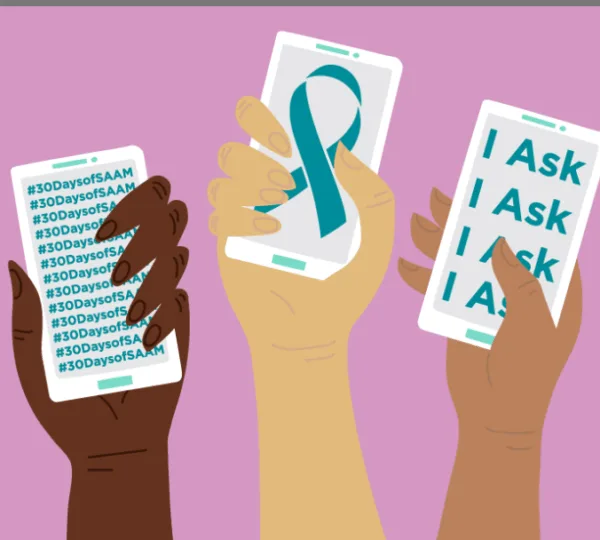 by
by 